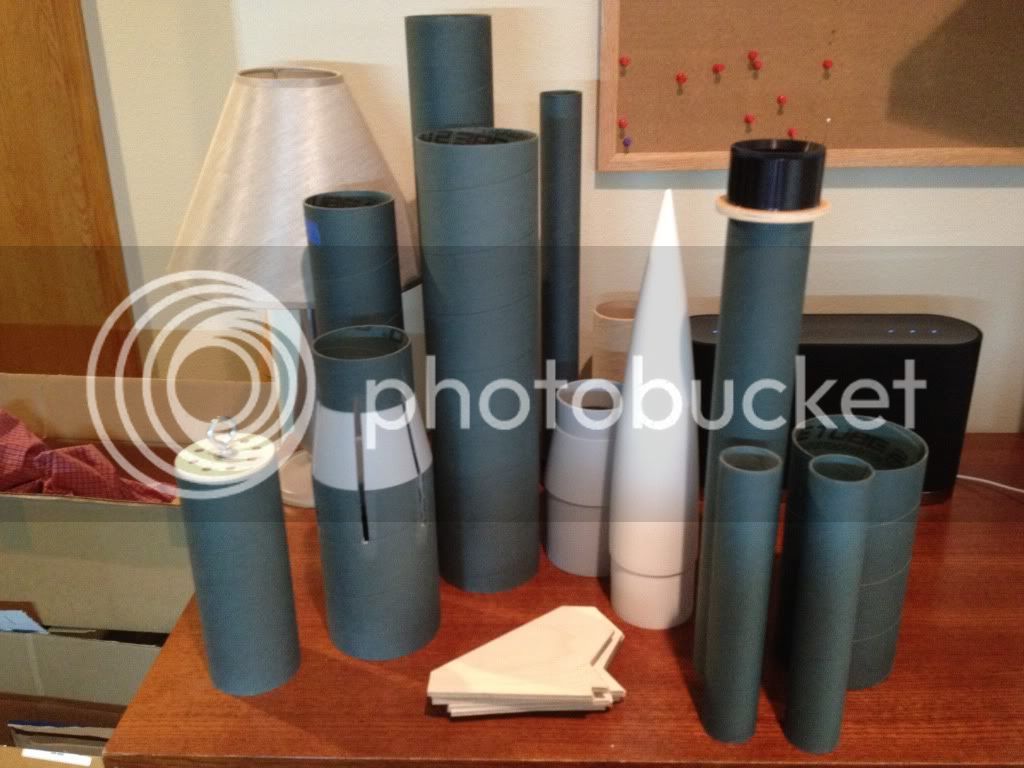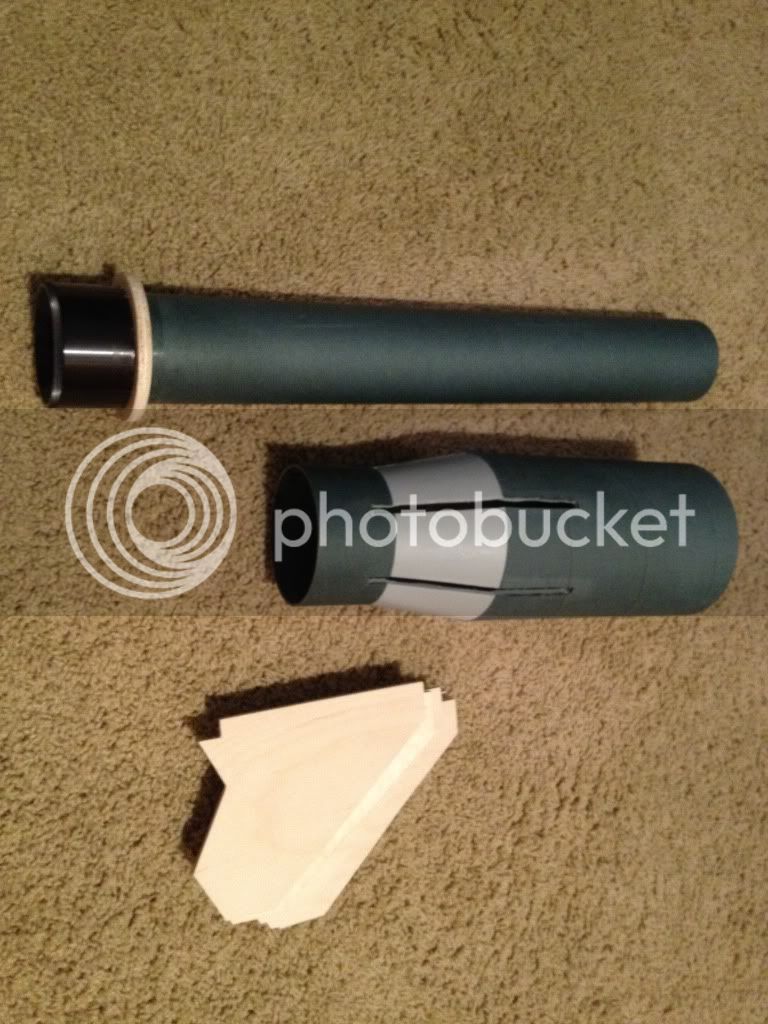I've been thinking about doing an HPR 2-Stager for a long time. I've completed the "draft" design in RS9. I say "draft" because I'm sure it will evolve a bit as the build progresses. I'm going to start by building the sustainer. I need some help from my TRF buddies, so please chime in here. In particular, I'm not sure how I want to couple the booster to the sustainer. And I'm thinking drag separation for staging (but I'm not tied strongly to any single approach). I've never done this before, nor have I begun searching the forums for techniques... So, if anyone can point me to useful threads (I'm sure I will pick up a thing or two from the dixontj93060 thread that is currently in the works), or offer experienced, sage advice please do so. I would also like some advice on avionics and sustainer ignition. In general, I don't know what I'm doing and I'm looking for help!
Once again, I just cannot bring myself to build a simple 3 or 4 fin design for the sustainer (or the booster for that matter). So, I've added some unique features to make it interesting (going for that "cool, futuristic surface-to-air, high-altitude, hyper-sonic, scram-jet powered sustainer" look). The sustainer will be 3" OD airframe with a 54 mm MMT, and the booster a 4" OD with a 54 mm MMT (Bluetube and G10 fins throughout).
Will post some RS9 images tomorrow...
Steely
Later downstream edit: As I progressed on the project I had to switch the upper stage MMT from 54 to 38mm. The 54 mm MMT did not allow enough space to utilize the stage coupling method that I settled on.
Edit #2: I also decided to do the booster fins out of 3/16" plywood, because they are easier to fabricate (including bevels) than fiberglass and don't add as much weight at the "wrong" of this bird.
Once again, I just cannot bring myself to build a simple 3 or 4 fin design for the sustainer (or the booster for that matter). So, I've added some unique features to make it interesting (going for that "cool, futuristic surface-to-air, high-altitude, hyper-sonic, scram-jet powered sustainer" look). The sustainer will be 3" OD airframe with a 54 mm MMT, and the booster a 4" OD with a 54 mm MMT (Bluetube and G10 fins throughout).
Will post some RS9 images tomorrow...
Steely
Later downstream edit: As I progressed on the project I had to switch the upper stage MMT from 54 to 38mm. The 54 mm MMT did not allow enough space to utilize the stage coupling method that I settled on.
Edit #2: I also decided to do the booster fins out of 3/16" plywood, because they are easier to fabricate (including bevels) than fiberglass and don't add as much weight at the "wrong" of this bird.
Last edited:

















